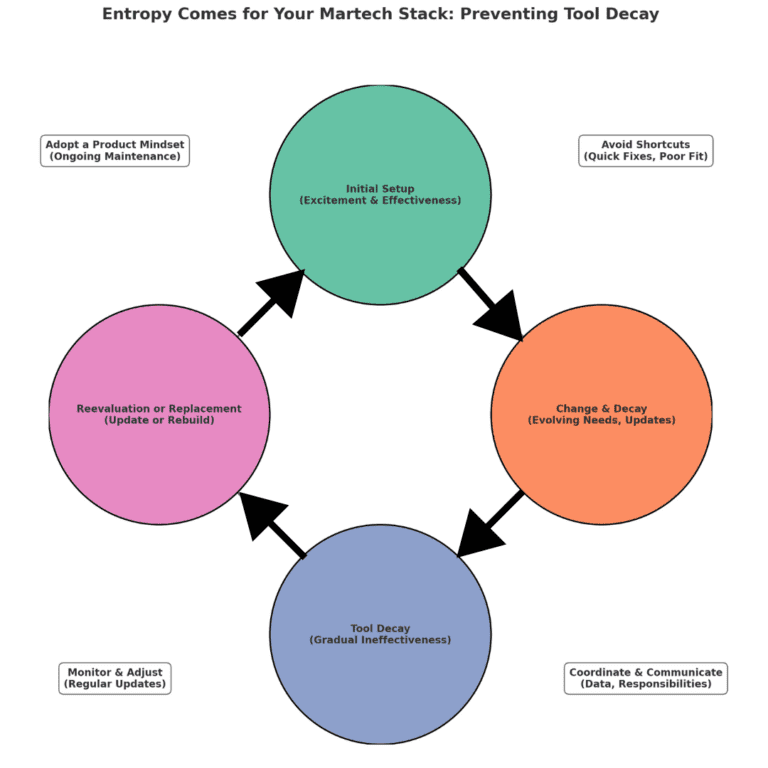Recently, we had a conversation with someone who was lamenting that one of their martech tools had become less effective over time. “It was great when we first got it,” they said, “and it worked so well when we set it up, but now, it’s no longer working the way it used to.”
Unfortunately, this happens to everybody. Even if your martech stack is configured perfectly when you install it, things around it change over time. Maybe your organization’s needs change, or your team needs to measure a new metric. Maybe there are system updates, or something new is integrated into a stack that changes workflow. As the cliche goes, “the only real constant is change”, and as things change, your tools might be left behind.
It’s tempting to blame this on the tools themselves, and it’s true that your organization may have outgrown your old stack and might need something new. But it’s possible to break any martech stack, even if you have the most incredible tools in the world. Chances are, your analytics tools aren’t to blame. (For more on that, check out our blog post on why your tools don’t suck as much as you think they do.)
So how can you slow – or even reverse – tool decay?

Adopt a product mindset, instead of a project mindset when setting up your tools and connections initially
Often, the process of building a martech stack looks like a checklist of tasks. Marketing teams go through the steps of integrating tools with the goal of completing the set up, but without an eye toward the longevity of the system. It doesn’t help that teams are often faced with firm launch deadlines and limited timeframes, and don’t have a ton of space to think about anything other than just getting everything done.
But to set up a stack that is more resilient to change, it can help to think about your martech stack in the way you’d think about a product. To stay functional, a stack needs to be maintained, supported, and grown in a way that serves the people using it. To begin thinking about your martech in this way, you can ask a few questions:
- Who is using this tool?
- What jobs/tasks are they using it to accomplish?
- How will it be used on a daily basis?
- Have any of these answers changed in the time since the tool was integrated?
In addition to keeping track of how a tool is being used, it’s also key to make sure you have an idea of who will be keeping your stack up to date to support these needs. Figuring out who will be responsible for supporting changes to things like data shape or the APIs, and how they’ll communicate those changes to the day-to-day users, can help keep tools running smoothly as systems evolve.
Resist “I just need this field over there” thinking
It’s so tempting to look for quick fixes in order to meet a rapidly approaching launch deadline, and it’s not always the worst strategy when it comes to getting things live. But hasty integrations come with tech debt – in other words, the longer term risk of breaking something in the future. And whatever time is saved with the fast fix is going to be lost again if the whole system has to be rehauled down the line.
It’s also tempting to try to make tools do things they’re not made to do, in an effort to get everything up and running fast. For example: we saw one situation where an organization was trying to pull off a quick launch, and so they set up a product management tool to perform a function because it was fast and available. But because it wasn’t designed to do what they needed it to, the system broke down, and needed to be completely rebuilt at a later date at great time and cost.
Even though time is at a premium, especially during a launch, making space to be thoughtful when integrating martech tools is the best way to ensure that everything keeps running. It might mean delaying a launch – but it will also mean that later, you won’t have to deal with taking everything offline to fix a problem that was created by setting tools up in a way that doesn’t ensure longevity.
All stacks break down, but being deliberate helps keep them running for longer. Thinking carefully about what your tools need to do, coordinating everything and everyone to support those functions, and staying on top of updates can prevent future breakdowns.
